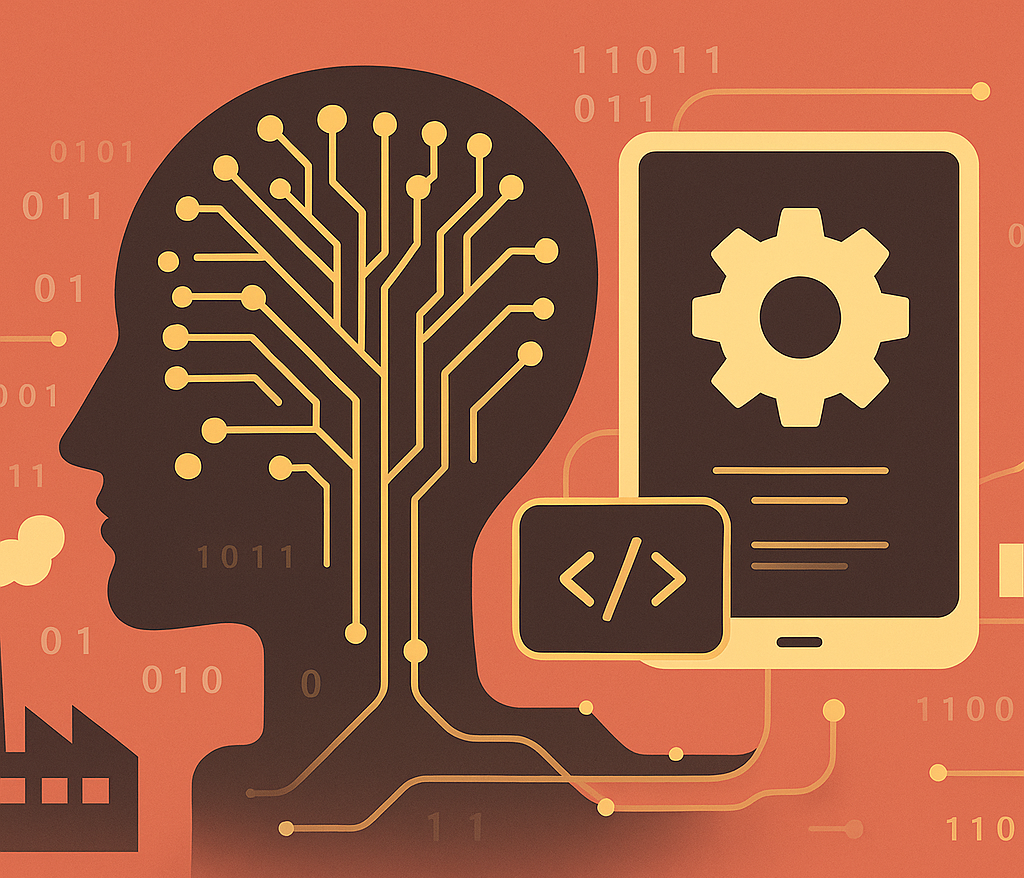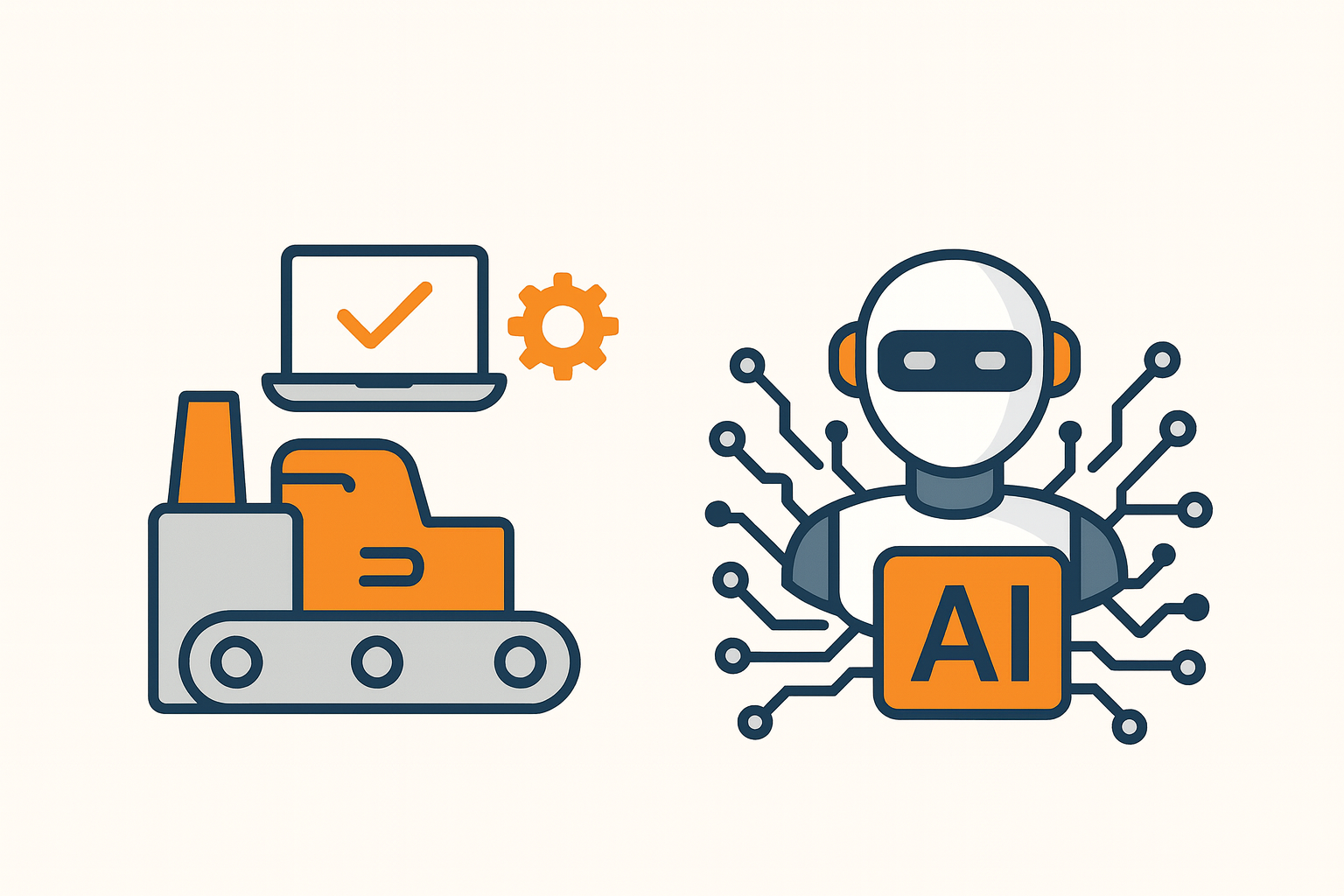What software-driven innovation means

Software as the new frontier of manufacturing competitiveness

Sara Strizzolo
15th May 2025
In 2011, Marc Andreessen published the famous article "Why Software Is Eating the World," anticipating a transformation that today, 14 years later, is more alive than ever. However, for many companies with a manufacturing DNA, integrating software and Artificial Intelligence into their products remains a challenge that is anything but simple.
Why software-driven innovation is crucial
Software-driven innovation represents a paradigmatic shift: hardware is increasingly becoming a commodity, while product value and the source of competitive advantage are progressively moving toward software. This transformation is driven by several factors:
- Supply chain complexity: managing global and complex supply chains requires flexibility and adaptability that only software can provide.
- Servitization: new business models, such as "Product-as-a-Service," require frameworks that enable dynamic updates and continuous customization.
- Hardware costs: hardware represents a significant investment; focusing product development on software allows companies to reduce costs and increase scalability.
In this context, adopting a software-centric approach becomes essential for maintaining competitiveness and responding to the demands of a constantly evolving market.
The challenges of software-driven transformation
Integrating software into physical products requires a profound cultural and organizational shift. Companies must break down traditional silos between research and development (R&D), manufacturing, and IT, fostering cross-functional teams.
This new paradigm demands the development of cross-cutting competencies: beyond highly skilled mechanical and electronic engineers, it is essential to train or acquire talent capable of operating in agile environments that are data-driven and focused on continuous interaction.
From a design perspective, one of the main challenges is making complex software function on legacy hardware systems that were originally designed with a hardware-centric approach and intended exclusively for machine control. Integrating, updating, and scaling software across systems supplied by different manufacturers requires significant development efforts, as it becomes necessary to meet the specific requirements of each software application within existing electrical/electronic architectures.
Factory-level implications
Adopting a software-driven approach has a profound impact on the entire production system, requiring a radical revision of traditional manufacturing processes. The factory is no longer the place where products are rigidly defined, but becomes a flexible and scalable node:
- Production line simplification: reducing the number of versions and variables to manage, thereby reducing the risk of error.
- Demand-driven customization through software: configurations no longer occur at the factory level, but post-production, through software activation. This enables the separation of physical production from product configuration, transferring complexity to software and the digital ecosystem.
- Greater operational efficiency: by reducing the number of physical variants to produce, manufacturing becomes more modular and scalable. Companies can respond quickly to demand variations without significant hardware investments.
- Accelerated time-to-market: waiting times related to specific product configuration are reduced. Software can be developed and updated in parallel without blocking the production chain.
The lifecycle of software-driven products
The evolution toward software-defined products is radically transforming the very concept of product lifecycle. Where products were once designed, manufactured, and delivered as static and "finished" entities, today - as McKinsey emphasizes - they become digital organisms in constant evolution. Through software updates, corrective patches, and incremental features, a product never truly stops developing: it improves, adapts, and learns user needs throughout its entire usage cycle.
From a technical standpoint, one of the key elements is the decoupling of hardware and software, which enables modular and iterative design. Hardware engineers can focus on optimizing physical components, while software developers can release incremental updates, adapting the product to new requirements without having to modify the mechanical or electronic components.
The software-driven approach has a direct and positive impact on user experience. Devices become configurable and customizable, offering tailored performance and the ability to easily access new features. Human-machine interfaces are simplified, improving usability and making interaction more intuitive. Furthermore, the extended lifecycle and the ability to update over time ensure a more lasting and rewarding relationship between user and product.
In this scenario, IoT applications become a natural extension of the product, facilitating access to connected functionalities and offering users simple, intuitive, and customizable interfaces. These solutions make the user experience more fluid and accessible, fully leveraging the potential of software-driven devices throughout their entire lifecycle.
From a go-to-market perspective, software-driven products enable simultaneous global release, with faster monetization of investments thanks to reduced time-to-market. New features can be activated on demand - even after sale - generating recurring revenue streams and reducing the need for distinct hardware versions for each market. Additionally, companies can establish a direct channel with end users, overcoming dependence on distributors, retailers, or system integrators, and offering "ready-to-use" digital experiences.
Adopting a software-driven lifecycle enables embracing "as-a-service" models, where continuous innovation replaces the traditional concept of product release. Companies can extend their presence across the entire value chain - from design to maintenance to customization - creating premium services, on-demand offerings, and evolutionary packages that generate value even in the post-sale phase.
To address this transformation, companies must adopt a
new mindset capable of managing a
lifecycle that is no longer linear, but
continuous,
adaptive, and
scalable. In return, however, they acquire the ability to proactively manage all the value generated by the product, while gaining direct market understanding.
The automotive case study
The automotive industry represents one of the clearest examples of software-driven revolution. The sector's high capital intensity and the demand for increasingly advanced functionalities (consider vehicle electrification and stringent efficiency regulations) have emphasized the importance of the software component.
Today, users also expect their cars to offer the same degree of customization and continuous updatability they are accustomed to with their digital devices. This has led to a proliferation of configurations, making the traditional approach to production and design unsustainable. It is precisely software that enables this flexibility, becoming the primary lever of differentiation and value.
A significant example is Volkswagen, which with its "ACCELERATE" strategy aims to become the reference brand for sustainable mobility. Since 2016, the German company has embarked on a path of profound transformation with Transform 2025+, which materializes through three strategic levers: brand value, scalable platforms, and value enterprise. At the center of this vision is the development of a proprietary digital ecosystem capable of constantly updating vehicles over time, enriching them with new software-based functionalities while generating revenue from charging services and personalized features tailored to individual needs.
On the industrial front, many OEMs are deciding whether to
internalize software development or
rely on external technology partners. While the first option allows for greater strategic control, it also requires significant investments in talent, tools, and infrastructure. In any case, it will become increasingly difficult to tackle the growing complexity of the ecosystem alone: for this reason,
partnerships and collaborations will become critical levers for scaling, innovating safely, and responding to customer needs.
A new mindset for a new era
Adopting a software-driven approach does not simply mean integrating a digital element into a physical product. It means radically rethinking the entire development journey: from the ideation phase to design, from production to post-sales support, and ultimately to redefining business models and customer interaction methods.
To navigate this transition, it is necessary to invest in digital competencies, enabling technologies, and a corporate culture open to change, oriented toward experimentation and continuous learning.
Within this new paradigm, Artificial Intelligence represents a strategic lever: it enables process automation, reduces development costs, and amplifies software potential in terms of efficiency and personalization. When coherently integrated into a software-centric model, AI becomes a value accelerator. Companies that can adopt this evolutionary mindset will not merely follow innovation - they will lead it.
For years, we have been supporting manufacturing companies on this transformation journey, assisting them in developing software-driven and connected solutions capable of generating real value throughout the product lifecycle.
Want to understand how to approach software-driven innovation? Contact us: we would be happy to discuss it with you.
👉 Want to discover how ready your company is to integrate AI into products?
Complete the AI Readiness Assessment (it will only take a few minutes)



